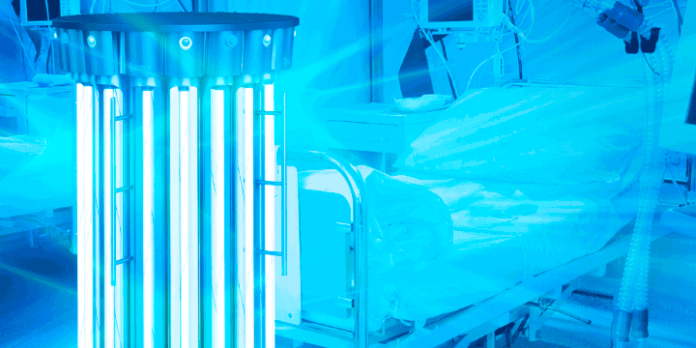In these Covid-19 pandemic times, and following the social distancing rule, there is also a need to disinfect hands, surfaces, and the air around us if possible. Ultra Violet (UV) light comes from the sun, but we also have human-made UV sources such as UV lamps. UV light gets rid of viruses and bacteria and can be used to purify water, air, and surfaces efficiently.
There are three types of UV light:
- UV-A
- UV-B
- UV-C
UV-A and UV-B lights are responsible for premature skin aging and sunburns. Too much exposure to these two types is associated with skin cancer. Of the three, UV-C has the most energy and is the most harmful. Luckily, it never gets to the earth’s surface as the atmosphere absorbs it. Man-made UV-C light is in most sanitizers and disinfects surfaces.
Here are some ways UV light can be used for disinfection:
- Air Disinfection
If a facility needs to disinfect the air, it can use UV light to do so. However, there has to be a significant contact with the air, making this method useful in still air. To make air disinfection more effective, most facilities prefer disinfecting air in the upper level of a room, ensuring that as the air is disinfected as circulates.
A facility may opt to install UV lamps near drain pans and coils of cooling systems such as refrigeration or air conditioners, preventing bacterial growth in the damp and cold conditions, and finally released into the air.
- Disinfecting Water and Treatment of Waste Water
Any facility can use UV light for water disinfection, as well as the treatment of wastewater. UV disinfection requires no chemicals and is a safe and viable option. UV light reduces parasite incidences like giardia or cryptosporidia, which is highly resistant to chemicals.
Wastewater treatment needs to be on a large scale. UV light can replace the chlorination process. While the UV light treatment cannot be used as the only protocol for disinfection, it is a typical wastewater treatment process in most metropolis.
- Surface Disinfecting
As mentioned above, surface disinfection via UV light is useful in healthcare facilities and other places. One focus of attention for LED iBond is developing UV-C LED lights, which inactivate several pathogens such as E.Coli, Pseudomonas, or MRSA.
UV in healthcare can be useful and efficient in disinfecting surfaces than wiping and cleaning surfaces, especially during this Covid-19 pandemic. UV-C kills viruses by damaging to their RNA and DNA, eliminating their ability to make a copy of themselves.
- Disinfection of Equipment
In addition to disinfecting stationary surfaces such as floors, tables, and countertops, UV light is recommended for disinfecting equipment. For example, labs and healthcare facilities that risk contamination uses UV to disinfect lab equipment such as glassware and goggles.
UV light has the advantage of being highly effective, yet dry, unlike bleaching, washing, or spraying of disinfectant, which leaves moisture and residue, which when released into the air may cause respiratory diseases.
- Disinfection of Food and Beverages
Using UV light to disinfect foods and beverages combines UV light effectiveness on surfaces and liquids. UV disinfection has been proven more effective with food manufacturers by disinfecting conveyor belts that are not very easy to clean. When you use the right products, these surfaces are disinfected without shortening the equipment’s life.
Conclusion
The Covid-10 pandemic has swept around the world, killing people in their millions. A lot has been said about how to kill the virus, and UV-light effectively kills the viruses. The UV light can be used in many places, such as hospitals for air and surface disinfection and disinfecting water and wastewater disinfection.
Equipment in labs and hospitals can also benefit from the virus, killing the power of UV light. Food and beverage industries can also use UV light for disinfection of equipment such as conveyor belts. The UV light kills viruses and makes them incapable of replicating themselves.


















